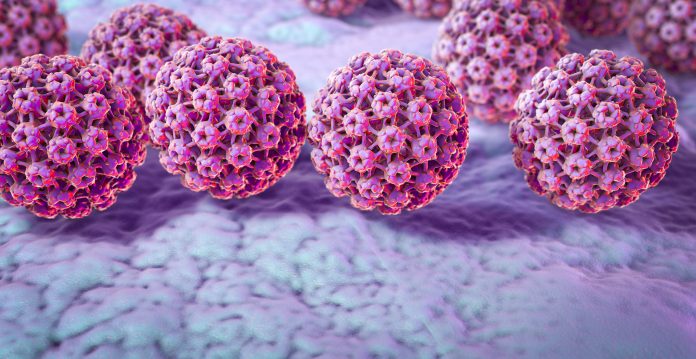
A new study led by investigators at UC San Francisco—who released their initial findings at Conference on Retroviruses and Opportunistic Infections (CROI) in February—shows that routine screening for and removal of precancerous anal lesions can significantly reduce the risk of anal cancer.
The study was published today in the New England Journal of Medicine.
“Anal cancer is among a limited number of cancers that are potentially preventable through treatment of known cancer precursors,” said lead author Joel M. Palefsky, MD, a professor of medicine in the Department of Infectious Diseases at UCSF about the study published in the New England Journal of Medicine. “This is the first randomized controlled trial showing that treatment of anal precursor lesions is effective in reducing progression to anal cancer, with progression approximately 60 percent lower in the treatment arm.”
Though anal cancer is rare in the general population, cases have been increasing in the U.S. and other developed countries in recent decades.
Anal cancer is caused by human papillomavirus (HPV), which can cause changes to the skin inside and around the anus known as high grade squamous intraepithelial lesions (HSIL). Similar to cervical cancer, anal cancer is preceded by HSIL. The cell changes often disappear on their own, but some develop into anal cancer, a disease that can have no symptoms at its earliest stages and frequently people are unaware of having it. Anal cancer may be mistaken for hemorrhoids, and by the time it’s diagnosed, it may have spread elsewhere.
Anal cancer is similar to cervical cancer since both cancers are preceded by HSIL. It is well known that cervical cancer can be prevented in women through treatment of cervical HSIL. Pap smear screening is used to identify women who need the next step in the evaluation, known as colposcopy, which allows clinicians to identify the areas of HSIL on the cervix and collect a biopsy in order to confirm the diagnosis. Once confirmed, the area can be removed to prevent progression to cervical cancer.
Because of the similarities between cervical cancer and anal cancer, similar methods have been used to identify and prevent anal cancer. A technique called high resolution anoscopy (HRA), uses a colposcope combined with a small plastic anoscope, though these are not considered to be a standard of care, because there was no previous direct evidence that treating anal HSIL is effective in preventing anal cancer.
The purpose of the the UCSF research was to determine if treating anal HSIL is effective and safe in reducing progression to anal cancer among PLWH compared with active monitoring of HSIL without treatment.
For the study, 10,732 PLWH who were 35 or older underwent high resolution anoscopy (HRA)-guided biopsy of visible lesions. A high proportion (53% of the men, 47 % of the women, and 67% of transgender persons) had biopsy-proven anal HSIL. The study included 4,459 PLWH participants with biopsy-proven HSIL, who were randomly assigned to a treatment arm or an active monitoring arm without treatment. Treatment consisted of office-based ablation, treatment under anesthesia, or topical treatments. The study was not designed to compare different types of treatment, but most participants were treated with office-based electrocautery.
All participants were followed with HRA every 3 to 6 months. For those in the treatment arm, the aim was to eradicate all HSIL. For those in either arm, lesions suspicious for anal cancer were biopsied at any visit.
With a median follow-up of nearly 26 months, nine cancer cases were diagnosed in the treatment arm while 21 cases were diagnosed in the monitoring arm. Altogether, HSIL treatment resulted in a 57 percent reduction in anal cancer, report the authors of the paper. There were 54 deaths in the treatment arm, and 48 in the monitoring arm, researchers found, but none were related to the study.
Experts say the data provide support to include screening and treating of anal HSIL as a standard of care in PLWH 35 years or older.
The study was performed exclusively among PLWH, so the results are most directly applicable to this group. However, the research team noted that the data “may also be relevant for other groups at increased anal cancer risk,” said Palefsky.
There are other implications of this research. A high proportion of PLWH likely have anal HSIL, meaning that a large number will need referral for HRA, and more information is needed to determine the best approach to screening. Since such a high proportion of PLWH have anal HSIL, new biomarkers are needed to determine those who are highest risk of progression and who are most in need of immediate treatment. Finally, although progression to cancer was significantly reduced by treating HSIL, some in the treatment arm still progressed to cancer, and further improvements in treatment of anal HSIL are needed.













